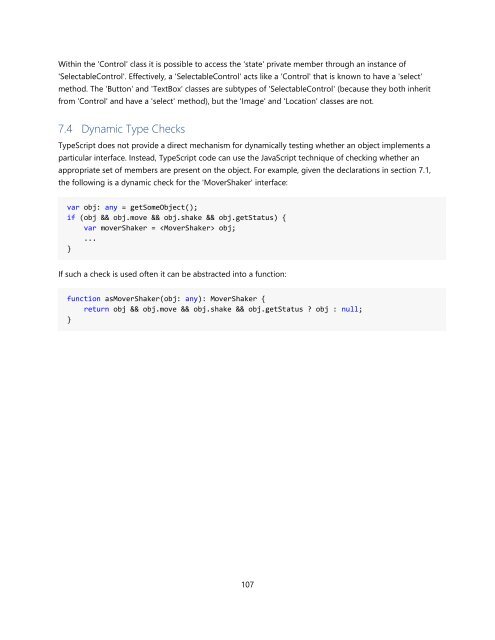TypeScript Language Specification v1.5
TypeScript Language Specification v1.5
TypeScript Language Specification v1.5
You also want an ePaper? Increase the reach of your titles
YUMPU automatically turns print PDFs into web optimized ePapers that Google loves.
Within the 'Control' class it is possible to access the 'state' private member through an instance of<br />
'SelectableControl'. Effectively, a 'SelectableControl' acts like a 'Control' that is known to have a 'select'<br />
method. The 'Button' and 'TextBox' classes are subtypes of 'SelectableControl' (because they both inherit<br />
from 'Control' and have a 'select' method), but the 'Image' and 'Location' classes are not.<br />
7.4 Dynamic Type Checks<br />
<strong>TypeScript</strong> does not provide a direct mechanism for dynamically testing whether an object implements a<br />
particular interface. Instead, <strong>TypeScript</strong> code can use the JavaScript technique of checking whether an<br />
appropriate set of members are present on the object. For example, given the declarations in section 7.1,<br />
the following is a dynamic check for the 'MoverShaker' interface:<br />
var obj: any = getSomeObject();<br />
if (obj && obj.move && obj.shake && obj.getStatus) {<br />
var moverShaker = obj;<br />
...<br />
}<br />
If such a check is used often it can be abstracted into a function:<br />
function asMoverShaker(obj: any): MoverShaker {<br />
return obj && obj.move && obj.shake && obj.getStatus ? obj : null;<br />
}<br />
107


















